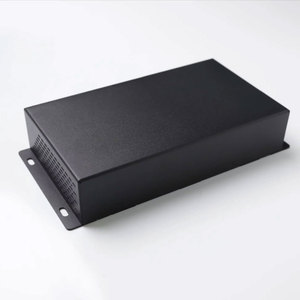(951 products available)




































































































































































































Android ROM updates refer to the modifications and customizations made by manufacturers, developers, or enthusiasts to the original stock ROM of an Android device. These updates often include new features, performance optimizations, bug fixes, and sometimes a completely new version of the Android operating system.
Here are the different types of Android ROM updates:
Manufacturers often provide a detailed specification of a device when releasing Android ROM updates. This includes different factors, from hardware to software, that affect the performance and usability of the device.
Hardware specifications:
The Android device's hardware impacts how the software runs and the features available. Key hardware components include the processor (CPU), graphics processor (GPU), memory (RAM), and storage. The processor and graphics determine how quickly tasks are processed and how smoothly the interface runs. More memory allows for better multitasking, while more storage enables more apps and data to be stored. Other important components include the camera, display, battery, and network connectivity options.
Operating system version:
Android updates are named after the version of the operating system they run. For example, Android 11 is the eleventh version of the Android operating system. Each update brings new features, improvements, and optimizations. Users can expect better performance, enhanced security, and access to the latest tools and technologies with each update.
Software features:
Software features include the Android version and any additional features or customizations added by the manufacturer. Android 11 introduced several new features, such as improved conversation management, one-time permissions for better privacy, and screen recording. Manufacturers may also add their unique features or modify existing ones to match their devices' look and feel.
Security updates:
Security updates are critical for maintaining the safety and security of Android devices. They address vulnerabilities and provide patches for known issues. Security updates ensure devices are protected against emerging threats and exploits. Manufacturers typically release security updates regularly, often every month, to address critical security issues as they arise.
Performance improvements:
Performance improvements are essential for maintaining Android devices' smooth and responsive operation. Updates may optimize resource management, enhance system stability, and fine-tune hardware-software interactions. These optimizations result in faster app launches, smoother animations, and overall better device performance.
It is important to keep Android devices updated. Not only does it provide security, but performance updates are available too. Devices with the latest updates will run better. Even new features can be added to a device that was not included at launch.
To maintain Android ROM updates:
Choosing the right Android ROM can be a daunting task, given the various options available. Here are a few things to consider when choosing Android ROM updates:
Here are the general steps for DIYing and replacing Android ROM updates:
Find the right ROM
ROMs are available from various sources. The ROM should be designed for the specific device. It should also be checked to ensure it has been vetted.
Backup the device
Backups should be done before flashing a new ROM. Backups ensure data is not lost in case something goes wrong. Data such as apps, contacts, and messages can be backed up. The backup can be done using the built-in backup feature or a third-party app.
Unlock the bootloader
Bootloader unlocking is necessary to flash a new ROM. Instructions from the manufacturer on how to unlock the bootloader should be followed. This usually involves enabling Developer Options and connecting the device to a computer.
Root the device
Rooting gives access to system files. It is not always necessary but is required for some devices to flash a new ROM. Research should be done for the specific device model.
Install a custom recovery
A custom recovery such as TWRP should be installed. This allows the user to flash the new ROM. The instructions for installing recovery on the specific device should be followed.
Download the ROM
The downloaded ROM should be compatible with the device. It should also be downloaded from a reputable source. The downloaded ROM should be transferred to the device's internal storage.
Flash the ROM
The device should be booted into recovery mode. The steps for booting into recovery mode should be followed. In recovery mode, the ROM should be flashed by following the instructions in the recovery.
Restore the backup
After flashing, the backup can be restored. This brings back apps, contacts, and messages. The restore should be done using the backup app used earlier.
Set up the device
The device should be powered on after flashing the ROM. The setup process should be followed to configure the device.
Q1: How long do Android updates last?
A1: The timeline for Android updates depends on the device's brand and model. Generally, flagship devices get 3 to 5 years of updates, while budget devices get 2 years or less.
Q2: Does Android 14 get updates?
A2: Yes, Android 14 will continue to receive updates. Major updates are usually followed by several minor updates to address bugs and improve performance.
Q3: How can users check for Android updates?
A3: Go to Settings > System > System Update. The device will check for available updates and prompt the user to download if there are any.
Q4: Are updates available for all Android devices?
A4: Updates may not be available for all Android devices, especially older ones. Manufacturers provide updates for as long as possible, but hardware limitations eventually affect compatibility.
Q5: What can users do if their device is no longer supported by updates?
A5: If the device is no longer supported, users can still use it safely. However, they should consider upgrading to a newer device that meets Android's security and performance standards.